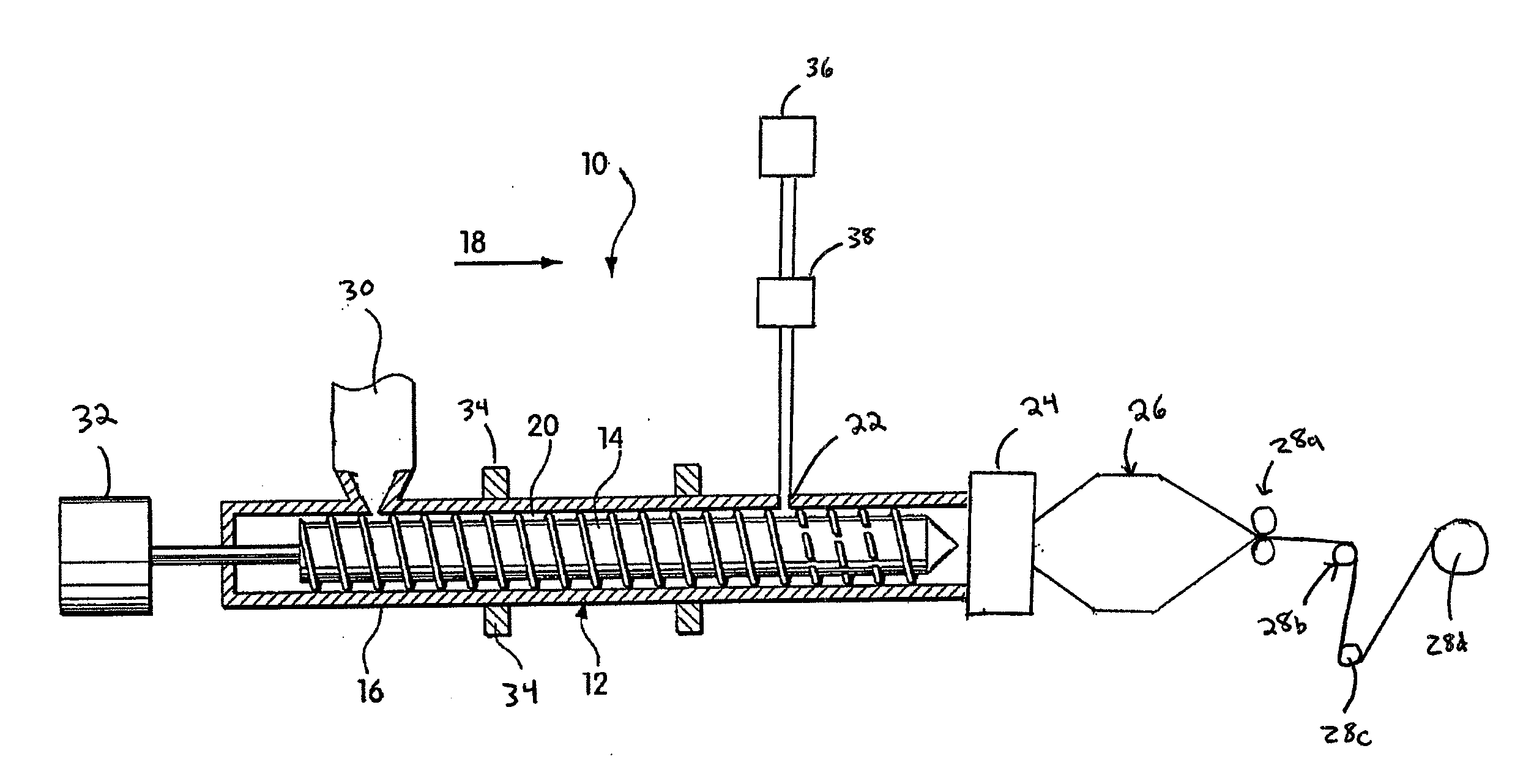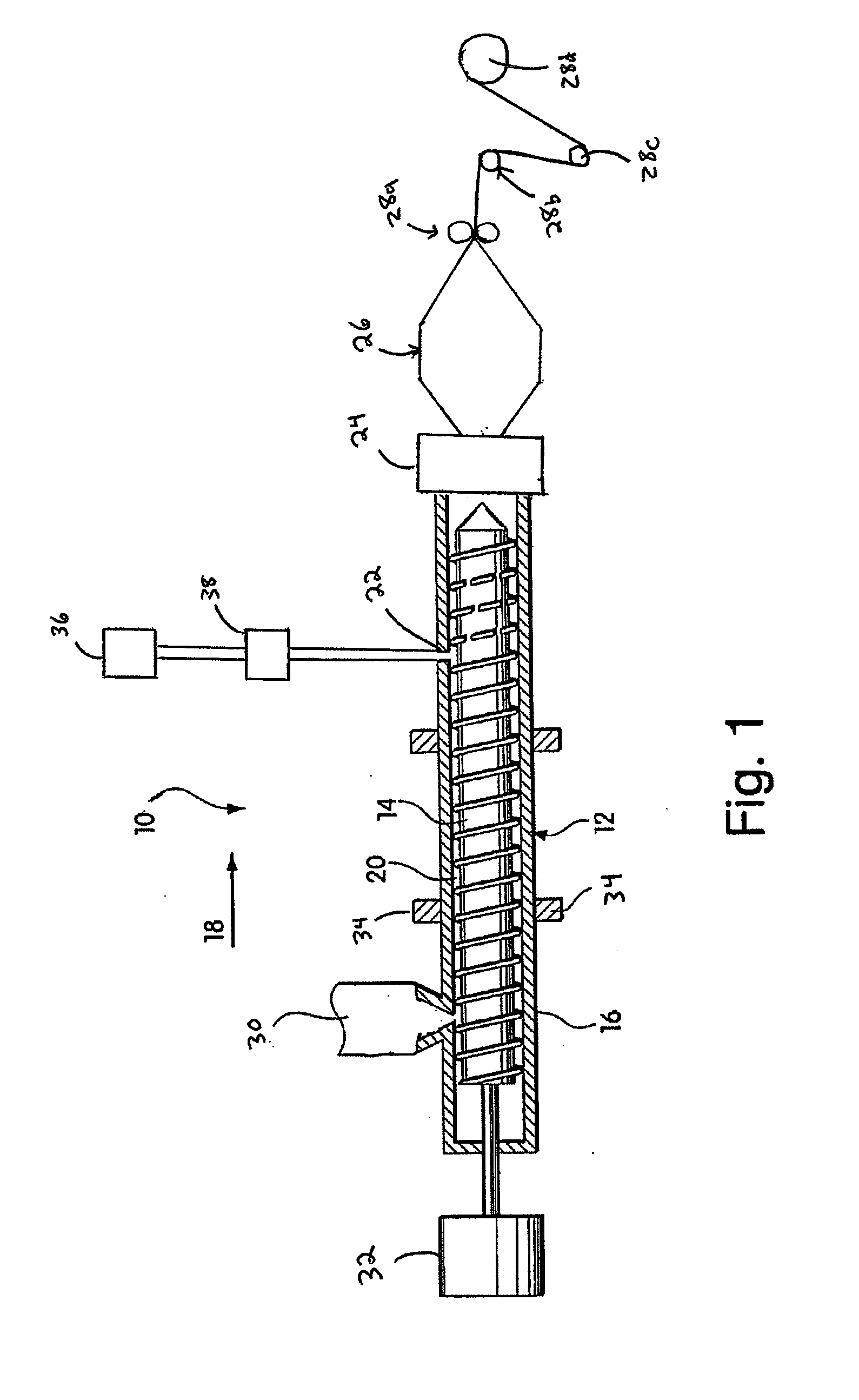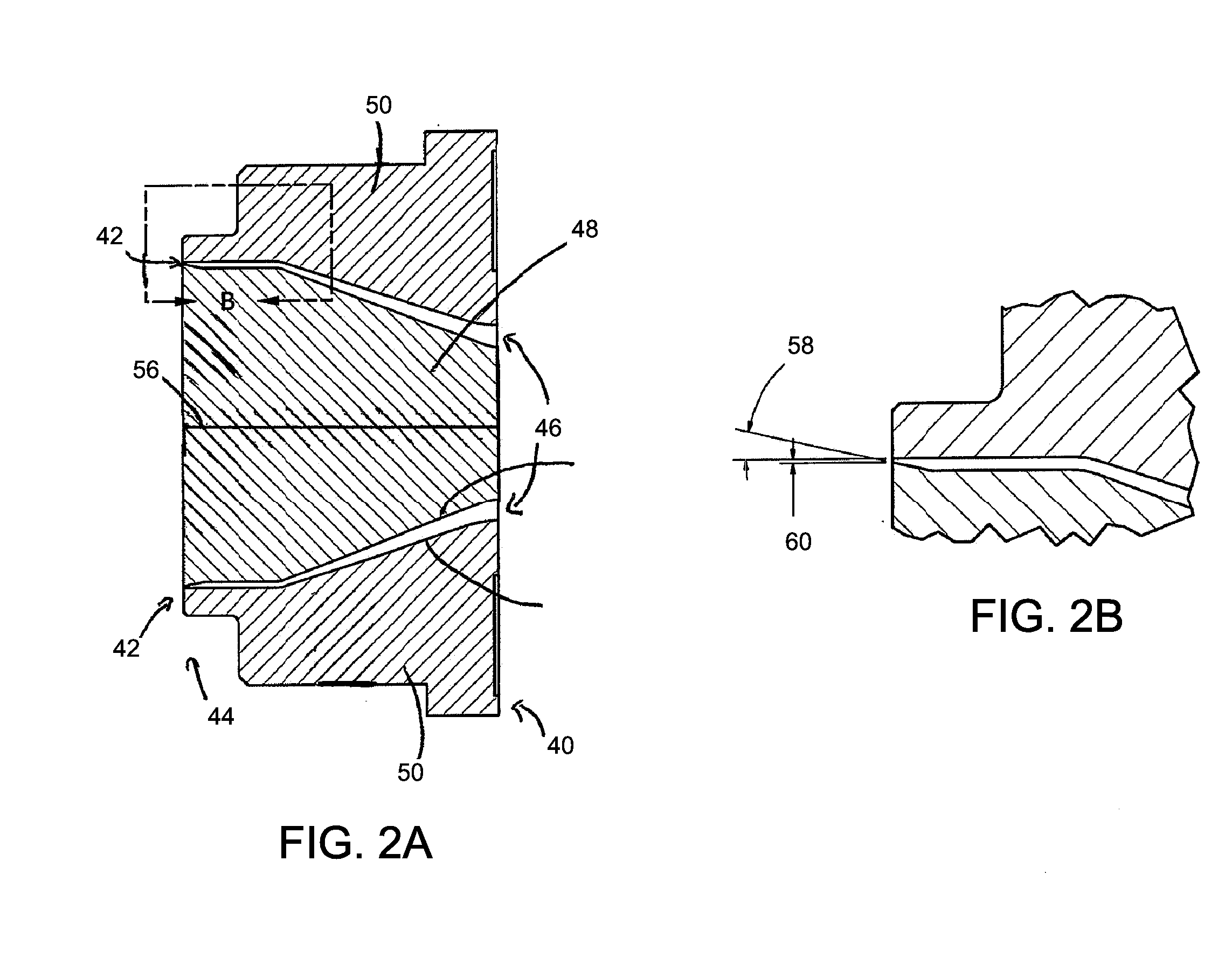Method of forming blown polymeric foam film
a polymer foam and film technology, applied in the field of polymer foam, can solve problems such as difficulty in maintaining a good cell structur
- Summary
- Abstract
- Description
- Claims
- Application Information
AI Technical Summary
Benefits of technology
Problems solved by technology
Method used
Image
Examples
example
[0047]This example illustrates the production of a polymeric foam blown film according to techniques of the invention.
[0048]A stream of medium density polyethylene material (MDPE) was created in an extruder. Nitrogen was introduced through a blowing agent port into the stream to form a mixture of nitrogen and MDPE. The percentage of N2 was less than about 0.5% by weight of the mixture. The mixture was mixed within the extruder to form a single-phase solution. The solution was extruded through a die similar to the one illustrated in FIGS. 2A and 2B. The die had a taper angle of between 4° and 20° and the gap at its outlet was less than 0.012 inches. The annular extrudate was blown to form an MDPE foam film precursor. The film precursor was processed, including by a slitting operation, to form a blown MDPE foam film.
[0049]The blown foam film was characterized using SEM analysis. FIG. 4 is a copy of an SEM photo illustrating a representative section of the film. The average cell size o...
PUM
| Property | Measurement | Unit |
|---|---|---|
| angle | aaaaa | aaaaa |
| angle | aaaaa | aaaaa |
| density | aaaaa | aaaaa |
Abstract
Description
Claims
Application Information
 Login to View More
Login to View More - R&D
- Intellectual Property
- Life Sciences
- Materials
- Tech Scout
- Unparalleled Data Quality
- Higher Quality Content
- 60% Fewer Hallucinations
Browse by: Latest US Patents, China's latest patents, Technical Efficacy Thesaurus, Application Domain, Technology Topic, Popular Technical Reports.
© 2025 PatSnap. All rights reserved.Legal|Privacy policy|Modern Slavery Act Transparency Statement|Sitemap|About US| Contact US: help@patsnap.com



